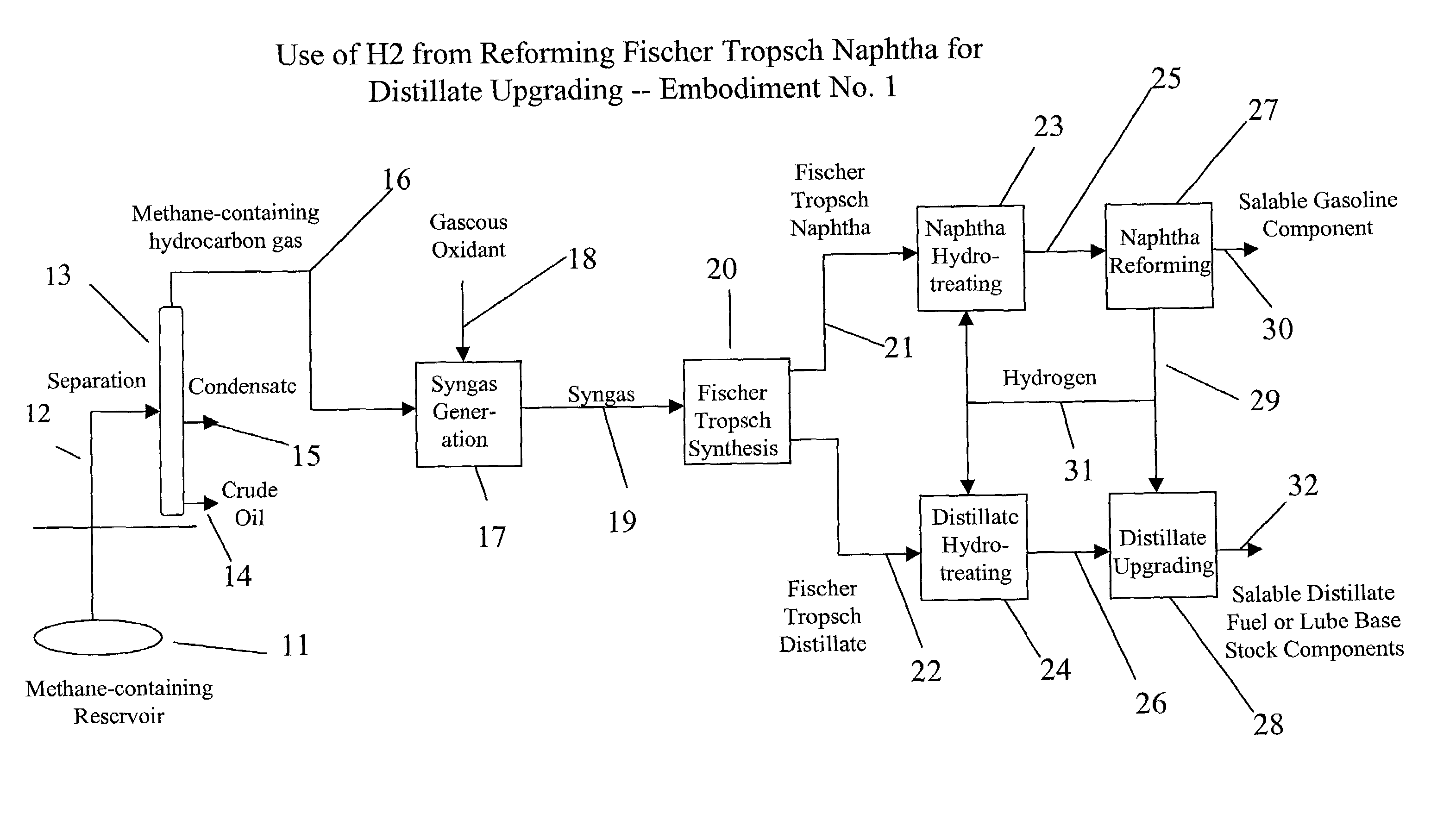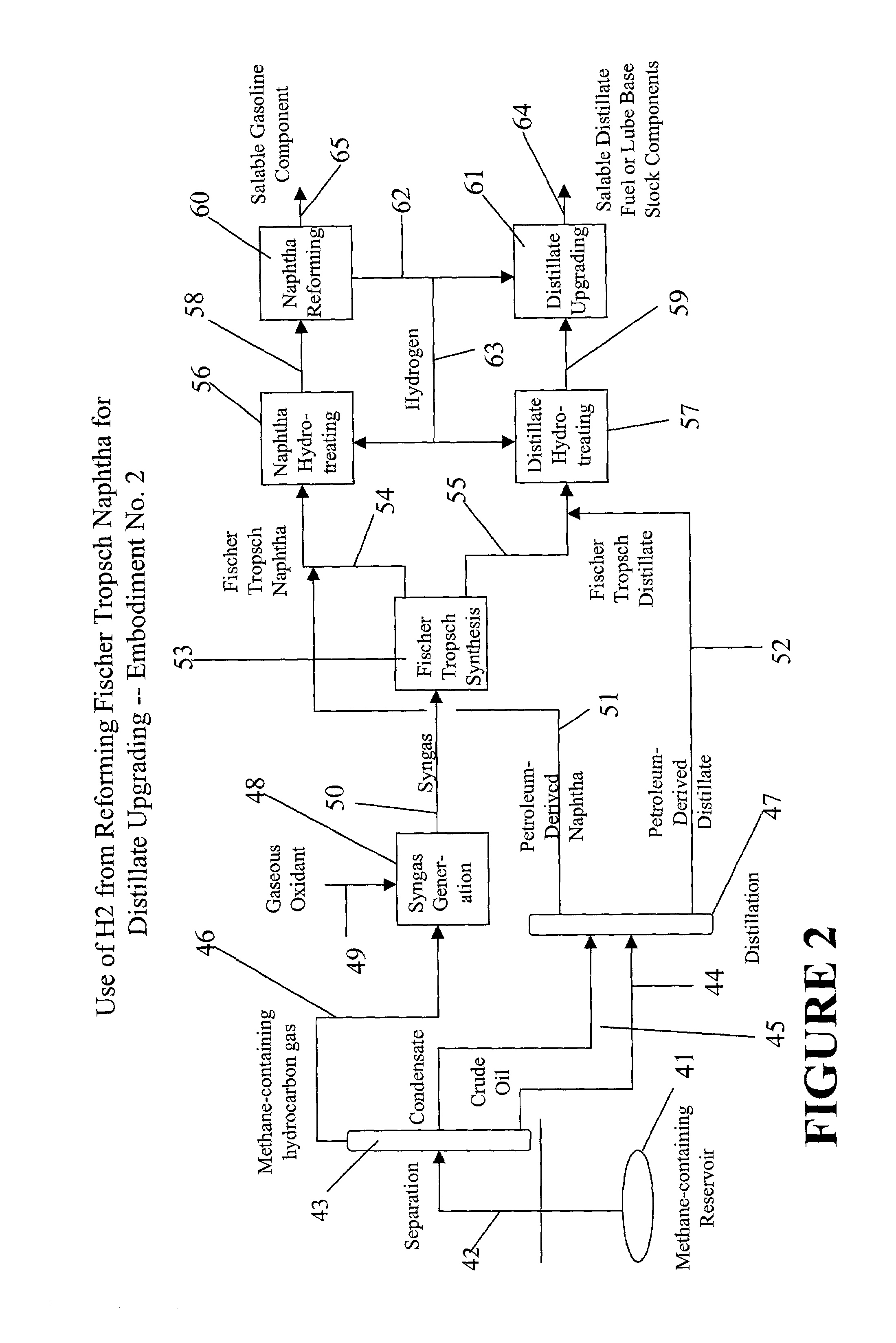Upgrading Fischer-Tropsch and petroleum-derived naphthas and distillates
a technology of petroleum-derived naphtha and distillates, which is applied in the direction of metal/metal-oxide/metal-hydroxide catalysts, physical/chemical process catalysts, etc., can solve the problems of inability to meet the requirements of transportation fuels, and inability to meet the requirements of conventional gasoline use, etc., to achieve adequate sulfur levels and inexpensive upgrading of fischer-tropsch products
- Summary
- Abstract
- Description
- Claims
- Application Information
AI Technical Summary
Benefits of technology
Problems solved by technology
Method used
Image
Examples
example 1
[0038]A Fischer-Tropsch naphtha and distillate product are blended to provide a mixture that contains approximately 1 weight % oxygen and less than about 10 ppm sulfur. This mixture is hydrocracked over a sulfided nickel tungsten catalyst at 663° F., 1.0 LHSV, 77% conversion, 1100 psig, and 10000 SCFB hydrogen recirculation gas rate. After 1500 hours of operation, the product at that time is fractionated and the 300–650° F. diesel portion is isolated. The sulfur content of the diesel fraction, as determined by the Antek method, is about 3.2 ppm by weight. This same sample is run in duplicate on a Dohrmann analyzer and the resulting sulfur levels are about 2.4 and about 2.6 nanograms per micro liter or about 3 ppm by weight sulfur. Both the Dohrmann and the Antek analyzers use oxidative approaches for the determination of sulfur and are reliable methods. The presence of sulfur in this product is confirmed in subsequent experiments and is believed to be due to displacement of the sulf...
PUM
| Property | Measurement | Unit |
|---|---|---|
| research octane rating | aaaaa | aaaaa |
Abstract
Description
Claims
Application Information
 Login to View More
Login to View More - R&D
- Intellectual Property
- Life Sciences
- Materials
- Tech Scout
- Unparalleled Data Quality
- Higher Quality Content
- 60% Fewer Hallucinations
Browse by: Latest US Patents, China's latest patents, Technical Efficacy Thesaurus, Application Domain, Technology Topic, Popular Technical Reports.
© 2025 PatSnap. All rights reserved.Legal|Privacy policy|Modern Slavery Act Transparency Statement|Sitemap|About US| Contact US: help@patsnap.com



